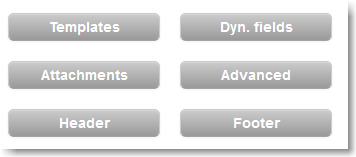The new email message page is commonly used to craft all aspects of your email message, from layout & design to more technical email tasks.
For a complete guide on email marketing best practices view the Email Marketing Resources, which includes:
- How to create a relevant email message
- How to avoid common mistakes in email marketing
- Understanding email authentication methods (SenderID, SPF, DKIM, DMARC)
Using the Email Editor
The built-in editor allows you to:
In alternative, you can work in another application, such as Adobe Dreamweaver or similar, and then copy & paste the HTML code directly in the Code view of the built-in editor. The built-in editor has numerous useful features, including:
|
Image Manager & Image Properties
Image Manager | Image Properties |
The Image Manager allows you to upload images, which are saved locally in the system. Once an image is uploaded it will show up on the Browse Files tab. To insert the image into your email, select the image and click on Insert. | Once an image is placed in your email, right-click on the image and click on Image Properties. This tool is very useful to configure the image settings, such as adding an Image Alt text (i.e. the text shown when an image is not shown), including a description, and constraining the image to its original width-height ratio, so that once you resize the image the proportions are not distorted. |
Intermediate-Advanced
Instead of locally saving your images into the system, you can choose to insert images from the web. This can be done by going into the HTML code and inserting an image tag.
Here's a basic example:
<img src="insert URL of image" alt="insert text which will be shown if image is blocked">
Advanced Settings



